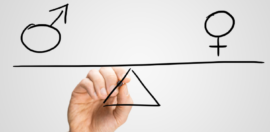Harnessing Australia’s Older Female Workforce - Report
23 May 2013 at 11:49 am
New research exploring how workplaces use the skills and talents of Australia’s older female workforce has found these women represent a sizeable and growing segment of the labour force but Australian organisations are failing to harness their skills and talents.
Furthermore, the study found that Australia’s performance in this area lags substantially behind comparable countries, such as New Zealand.
Diversity Council Australia, in partnership with the Australian Human Rights Commission and with Sageco,undertook the research, called Older Women Matter: Harnessing the Talents of Australia’s Older Female Workforce.
The study investigated how underutilised older women are and what employers can do to better harness their skills and talents.
Older women constitute 17% of Australia’s workforce with 45% of women aged 45 and over now in the labour force compared to less than a quarter (24%) in 1978.
“Older women’s participation in the labour market is substantially lower than men’s in all age groups − as much as 17 points lower for women aged 55-64. The underemployment rate for women aged 45 and over is 6.5% compared to 4.7% for men of the same age,” the report said.
“The most recent comparable data shows participation rates for Australian women aged 55-64 of 54.9% compared to 72% in Sweden, 69.8% in New Zealand, 59.5% in the US and 57.4% in Canada. If Australia had the same participation of people aged 55+ as New Zealand, GDP in 2012 would have been 4% higher.
“Employers can reap significant benefits if they review their attraction, retention, transition and flexible working strategies with older women in mind.”
The research draws on three primary sources: a Think Tank of leading diversity practitioners, DCA survey findings, and industry and academic research on older employment.
From the research, DCA recommends seven key actions employers can take to attract, engage and retain older female workers, as well as to structure effective transitions into retirement.
The report can be downloaded at http://www.dca.org.au/dca-research.html








Interesting report. As one of the older female workers with lots of skills, including two university degrees, I’d like to at least get an interview for a job that pays over $15 an hour. I am a single person who needs to support myself.
I’d be very happy to job share with another professional, but people at the top of the ladders, even the women, don’t seem to believe in it because without having even tried it they believe it affects productivity. I suggested a job share at my previous employer. I even had my doctor recommend that it would suit the way my life was panning out at the moment. I worked for a government department, but under the new State government policy that person was in charge at the local level. This obviously meant she did not have to follow the government policies that I was pledged to follow in my every day duties.
I faced the sack over nothing so I was forced to resign. The next day I was replaced by a 30 year-old. That’s what is going on out there in the workforce. I believe it should be called age discrimination. By the way, I am sick of being called a “mature worker”. Why not call everyone under 40 a “young worker” instead. The labels are normalising the workforce and reinforcing that they are young and young is good. “Mature” is not appreciated in our young, free country. There is a stigma attached to it now and it’s not going to go away while it is reinforced, unless it begins to be included under the EEO principles which mark jobs for Aboriginal People and People with Disabilities.
To think people over 40 are classified as mature at a time when the government has just put the retirement age up to 68 is quite scandalous. So people over 40 are now meant to hang around on contract jobs here and there, if they are lucky, for 28 years? It is also scandalous that government jobs are advertised internationally when we are not using the expertise we have in Australia with people who have been working all their lives. Outrageous.
Questions…
I wonder why those deemed to be “older workers” are viewed by some as less worthy of paid employment, yet desired for their potential (and contributions) as members of the volunteering community?
How are those of us who seek part-time (or full-time) employment being encouraged to contribute to the best of our ability if ageism and gender inequality are as prevalent as some suggest?
Just thinking: A strengths-based approach which provides for different generations to learn from each other might just minimize the so-called “generation gap”. Those reluctant to acknowledge that we all have talents and skills to offer, and interests worth sharing, irrespective of chronological age, might be pleasantly surprised if they are prepared to overcome a seemingly entrenched deficit-thinking perspective. I wonder…